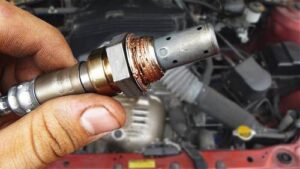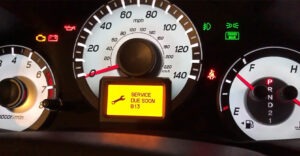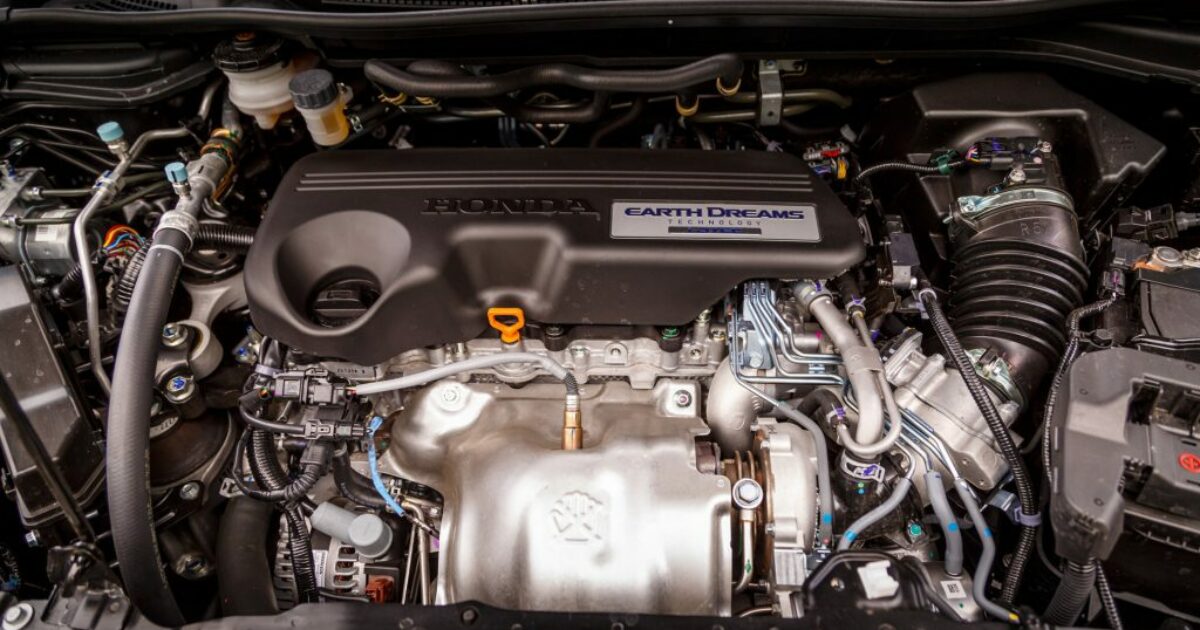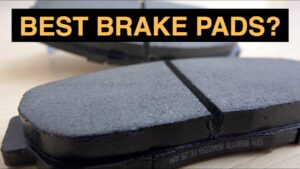You might not want to see the B13 Honda code illuminated on your dashboard—it’s a mysterious mix of letters and digits. But don’t worry—figuring out what this code means is the first step to fixing any underlying problems with your Honda. Within the domain of automotive diagnostics, the B13 code functions as a message from the On-Board Diagnostics II (OBD-II) system of your automobile, informing you that there is a problem beneath the hood that needs to be fixed. We’ll unravel the mystery around B13 as we set off on this adventure and reveal the information it conceals regarding the condition of your car.

We will clarify the several reasons that could result in this code, ranging from broken oxygen sensors to possible problems with the ignition system. But that’s not where the narrative ends. With your newfound understanding, you will be able to handle these problems and wave goodbye to the mysterious B13 code with do-it-yourself solutions. So buckle up, and let us guide you through the complexities of the B13 Honda code so you can maintain the happy running condition of your Honda while driving.
Table of Contents
B13 Honda Code: What Does It Mean?
The On-Board Diagnostics II (OBD-II) system in your vehicle displays the B13 Honda code as a diagnostic issue code. To put it another way, think of it as the computer in your automobile alerting you to something not quite right. This particular code, B13, indicates an issue with the engine, gearbox, or emissions control systems.

Now, we will break down the code:
B: This denotes a body code, which usually refers to interior features, but in this instance, the engine is the subject.
1: Indicates that this is a Honda manufacturer-specific code.
3: Identifies the precise problem with the engine, which could be related to the mass airflow sensor, oxygen sensor, catalytic converter, ignition system, or vacuum leaks.

Hence, your car is alerting you to a problem with one of the engine’s components when you notice the B13 code. Remain calm! Knowing what this code means will help you identify the problem and take the necessary action to get your Honda running properly again.
What Are The Common Causes Of The B13 Honda Code?
The B13 Honda code is a signal from the onboard computer of your car, similar to a secret language. Maintaining the smooth operation of your Honda requires understanding it. Let’s now investigate the common causes of this enigmatic code.
1. Problems With Oxygen Sensors:
The oxygen sensor is frequently the source of the B13 code. This sensor keeps track of the amount of oxygen in the exhaust of your car. The B13 code is activated when it malfunctions and sends erroneous data to the car’s computer. Frequently, this problem can be remedied with routine examinations and prompt replacement of an unhealthy oxygen sensor.

2. Catalytic Converter Is Clogged:
Think of the exhaust system in your car as the respiratory system. Issues may arise if the system’s “lungs,” the catalytic converter, become blocked. The exhaust flow is restricted by a blocked converter, additionally, which affects oxygen sensor readings and sets off the B13 warning. You may avoid this problem by giving your exhaust system regular maintenance and making sure it’s clean.
3. Glitches In The Ignition System:
The ignition system in your car is similar to its heart. This rhythm can be broken by problems with the ignition coil or spark plugs, which can result in the B13 code. It is essential to examine and replace malfunctioning ignition coils or spark plugs regularly. In addition to preventing the B13 code, maintaining a functioning ignition system guarantees smooth engine operation.
4. Leaks In Vacuum:
Consider the engine in your car as a well-tuned symphony. Moreover, vacuum leaks or any other disturbance in the airflow might upset this balance. Vacuum leaks in the intake manifold or hoses might cause incorrect combustion and set off the B13 code. Preventing this problem requires routine vacuum leak inspections and timely repairs.

5. Mass Airflow Sensor Problem:
An essential component of the combustion process, the air entering the engine is measured by the mass airflow sensor. However, the air-fuel mixture may be disturbed by this sensor’s malfunction, which could result in the B13 code. A malfunctioning mass airflow sensor can be routinely inspected and replaced. However, to keep the engine operating efficiently and stop the B13 code from coming again.
Therefore, by being aware of these typical reasons for the B13 Honda code. Additionally, you can take proactive measures to keep your car in good condition and drive more smoothly and trouble-free. The prevention and resolution of these problems can be greatly aided by routine examinations and prompt remedies.
Can I Drive My Car With The B13 Honda Code?
The B13 code indicates a problem with the engine or exhaust systems if it appears on your Honda. Even while it’s best to take care of the issue right away, you can still drive carefully on short trips. On the other hand, continuing to drive your car while the B13 code is unresolved may cause more serious issues and affect how well it runs.

Moreover, don’t overdrive the engine and maintain a steady speed. To stop more damage, it’s imperative to set up a diagnostic and address the underlying problem right away. Driving without fixing the B13 code could lead to higher emissions and worse fuel efficiency. Moreover, always remember that getting your car checked out by a professional technician can ensure that your Honda is reliable and long-lasting.
Solutions To Fix The Honda Code B13 In The Simple Terms
It can be frightening to find the B13 Honda code on your dashboard, but do not panic! Additionally, we’ll make the solutions to this problem simpler in this guide. Discover simple do-it-yourself methods to troubleshoot the B13 code and restart your Honda.
1. Examine And Swap Out The Oxygen Sensor:
The exhaust gases are monitored by the oxygen sensor. It can set off the B13 code if it’s not functioning properly. Check for any damage that is apparent on the sensor. Replace it with a new one if you discover any. Next, restart your computer and check to see whether the B13 code disappears.

2. Examine And Address Problems With The Catalytic Converter:
Your car’s catalytic converter manages exhaust flow, much like its lungs. However, it could be clogged or broken, which could interfere with the B13 code. If you can, clean it and inspect it for damage. Moreover, think about purchasing a new one if cleaning doesn’t work. Reset your system after applying this repair, and keep a watch out for that annoying B13 code.
3. Handle Gremlins In The Ignition System:
There are instances when the ignition system is the problem. The cause may be malfunctioning ignition coils or spark plugs. Check them out, and replace any that don’t work properly. Verify the condition of every component in the ignition system. After that, try a system reset to see if the B13 code decides to go on vacation.

4. Look For Leaks In Vacuum:
Engine vacuum leaks can disrupt the air-fuel mixture and result in the B13 error code appearing. However, make sure the engine is completely inspected for leaks in the intake manifold, gaskets, and hoses. Seal off any leaks you discover. Furthermore, check to see if the B13 Honda code disappears after performing this do-it-yourself operation.
5. Greet The Mass Airflow Measurement Device:
The amount of air entering the engine is measured by the mass airflow sensor. If it is malfunctioning, the B13 code may be affected. Examine the sensor for any damage or contamination. If it’s not in decent condition, get a brand-new one. Reset your system after this exchange, and then keep an eye out for that B13 code. Hopefully, it won’t appear.

Therefore, to put it briefly, cracking the B13 Honda code is like piecing together a puzzle. Moreover, proceed cautiously, beginning with the oxygen sensor replacement and inspection. Proceed to the catalytic converter, ignition system, and vacuum leak detection next. Finally, take a moment to examine the mass airflow sensor. After every fix, reset the system and pay attention to the B13 code. However, you may say goodbye to the B13 code and resume driving your Honda with ease with a little do-it-yourself magic.
Conclusion:
Although the B13 Honda code may appear to be a difficult problem, it may be diagnosed and fixed without the assistance of a specialist if a methodical approach is followed. You can guarantee that your Honda keeps providing the performance and dependability for which it is renowned by comprehending the significance of the code and taking appropriate action to address any possible problems. Additionally, always heed safety precautions, and refer to your car’s handbook for detailed instructions. However, you may solve the B13 Honda code and maintain the smooth operation of your vehicle with a little perseverance and do-it-yourself enthusiasm.



